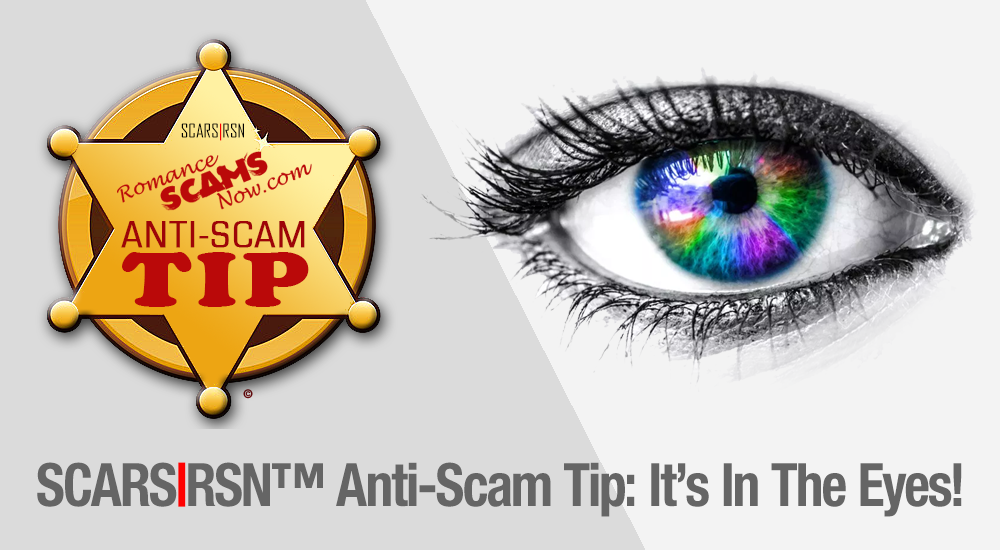SCARS™ Anti-Scam Tip: It’s In The Eyes!
Scammers Don’t Understand
Eye Colors!
Gray, Black, Hazel Are Their Preferred Choice
Silver / Grey Eyes
Silver or Grey (gray) eye color is quite rare, although many consider silver eyes to be a variation of blue eye color. Like blue eyes, silver eyes are the result of a very low amount of pigmentation in the eye, which reflects a gray-silver appearance. Silver eye color is most common in eastern European countries, and is one of the rarest eye colors worldwide. One of the eye colors that is even rarer is Gold.
Black Eyes
There is no such thing as Black Eye Color, though ignorant scammers would not know this. Dark eyes are simply brown in color, with the pupil being black. They can be dark brown, but never black.
Hazel Eyes
Hazel eyes are similar to brown eyes, although they are typically lighter in color, and have more of a green-yellow tint. Hazel eyes have a higher concentration of melanin (pigment) around the eye’s border, which can result in a multi-colored appearance that varies between copper and green depending on the lighting. Most people estimate that around 5-8% of the world’s population has hazel colored eyes. Scammers frequently list Hazel eye color when they can’t see the color in the stolen photo clearly – usually mistaking Blue as Hazel.
Green eye color is often confused with hazel eye color, yet is entirely separate and distinct. Green eye color is the rarest color found around the world, except for true Gold (not to be confused with Amber), and it is estimated that only around 2% of the world’s population has green colored eyes. Green eye color is a result of a mild amount of pigmentation in the eye with a golden tint. When combined with the natural blue scattering of the eye, the colors mix to give a green appearance. Green eye color is most common in northern and central Europe, but can also be found in western Asian cultures on rare occasion. Scammers sometimes mistake Blue for Green and will list Green in the profile, though most of the time they list Hazel.
Blue eyes are genetically recessive, and therefore much less common worldwide. Blue eyes are formed by the absence of pigments in the eye, where the blue color is formed by the scattering of light as it’s reflected off the iris. While blue eyes are less common than brown eyes, they are frequently found from nationalities located near the Baltic sea in northern Europe. It’s estimated that approximately 8% of the world’s population has blue eyes. Scammers frequently will list blue color as hazel, both because the photo that they have stolen is not clear enough, and culturally they think that that color IS hazel. No person who has Blue eyes would ever make that mistake.
Amber Eyes
Amber eyes show off a yellow-copper tone, which results from the yellow colored pigment lipochrome. Amber eyes are very rare worldwide, and are most common in Asia and South American countries. Amber eye color can range from golden yellow to a more copper tone. Gold colored eyes are a variation of Amber but are more yellow, and true gold colored eyes are the most rare of all eye colors.
ANTI-SCAMMER TIP:
Scammers work large numbers of potential victims. It is a game of numbers for them, especially in the early stages of their conversations.
You can usually expose a scammer through the eye color they put on their fake profile!
If they say they have Hazel Eyes, in your messages ask about their “brown” eyes. If they say yes, they have brown eyes, you got them. In other words, just ask about a different color from what the profile says, they generally don’t take the time to check. It is not a perfect test, but the majority of the time, it’s the details that trip them up if you really check!
If you are talking with someone and you want to trip them up just ask for their eye color!



Please Leave A Comment - Tell Us What You Think About This!